In last month’s Cooper Hewitt Short Story, Matthew Kennedy revisited the Ringwood Manor guest books, pulling out delightful images that spoke to the summer season at the Hewitt’s country estate. In this month’s segment, Ringwood Manor historian Sue Shutte explores Cooper Hewitt’s extensive online collection to find enticing parallels to those items found in the family’s personal collection.
Margery Masinter, Trustee, Cooper Hewitt, Smithsonian Design Museum
Sue Shutte, Historian at Ringwood Manor
Matthew Kennedy, Publishing Associate, Cooper Hewitt, Smithsonian Design Museum
 In addition to Sarah and Eleanor founding the Cooper Union Museum for the Arts of Decoration, many of the objects now in Cooper Hewitt’s collection were donated or bequeathed by members of the Cooper and Hewitt families. In searching Cooper Hewitt’s online collection, one can find ceramics, textiles, artwork, and more that closely resemble or are exact matches to items also in the collection at Ringwood Manor. How could this be? At times, the Hewitt sisters may have purchased two of the same items—one for their own personal collection and one for the museum collection. The family was also engaged in increasing the museum holdings at the same time they were planning to donate Ringwood Manor to the state of New Jersey as a historic site. Pairs or groups of items that were intended to go together to one location may have accidentally been separated during the packing process. Whatever the case may be, these commonalities suggest parallel collecting practices of the sisters and their family and help us to illuminate the personal taste of Sarah and Eleanor.
In addition to Sarah and Eleanor founding the Cooper Union Museum for the Arts of Decoration, many of the objects now in Cooper Hewitt’s collection were donated or bequeathed by members of the Cooper and Hewitt families. In searching Cooper Hewitt’s online collection, one can find ceramics, textiles, artwork, and more that closely resemble or are exact matches to items also in the collection at Ringwood Manor. How could this be? At times, the Hewitt sisters may have purchased two of the same items—one for their own personal collection and one for the museum collection. The family was also engaged in increasing the museum holdings at the same time they were planning to donate Ringwood Manor to the state of New Jersey as a historic site. Pairs or groups of items that were intended to go together to one location may have accidentally been separated during the packing process. Whatever the case may be, these commonalities suggest parallel collecting practices of the sisters and their family and help us to illuminate the personal taste of Sarah and Eleanor.
As we know from firsthand accounts, the sisters did not necessarily see a strict boundary between their personal effects and the collection of their beloved museum. Eleanor wrote regarding her mother, in Making of a Modern Museum: “As she looked about her devastated home, would often say, ‘I wonder where that is?’ or, when visiting the museum, ‘didn’t I once have something like that?’ thinking she recognized some cherished object.” This pillaging referred to the family’s New York City residence at 9 Lexington Avenue, but assuredly the properties at Ringwood afforded a similar fluidity.
Below is a sampling of items found in the collection of Cooper Hewitt, Smithsonian Design Museum that are remarkably similar to pieces the Hewitts kept at Ringwood Manor. Explore how the Hewitts collected and lived!
Drawings
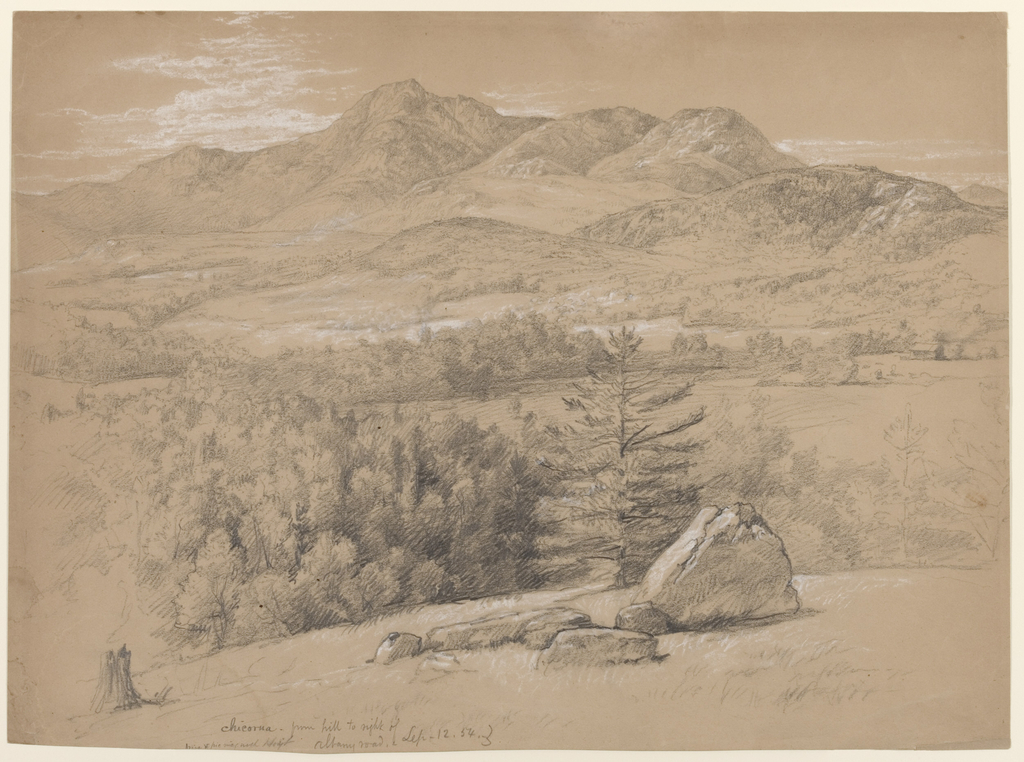
Drawing, View of Mount Chocorua, from Hill to Right of Albany Road, September 12, 1854; Daniel Huntington (American, 1816–1906); Graphite and white chalk on brown wove paper; 29.2 x 40cm (11 1/2 x 15 3/4in.); Frame: 44.8 x 60.3 cm (17 5/8 x 23 3/4 in.); Cooper Hewitt, Smithsonian Design Museum; Bequest of Erskine Hewitt, 1942-50-222
This graphite and white chalk sketch is by artist Daniel Huntington and was a bequest by Erskine Hewitt. A similar landscape sketch by the artist can be found hanging in the Great Hall of Ringwood Manor.
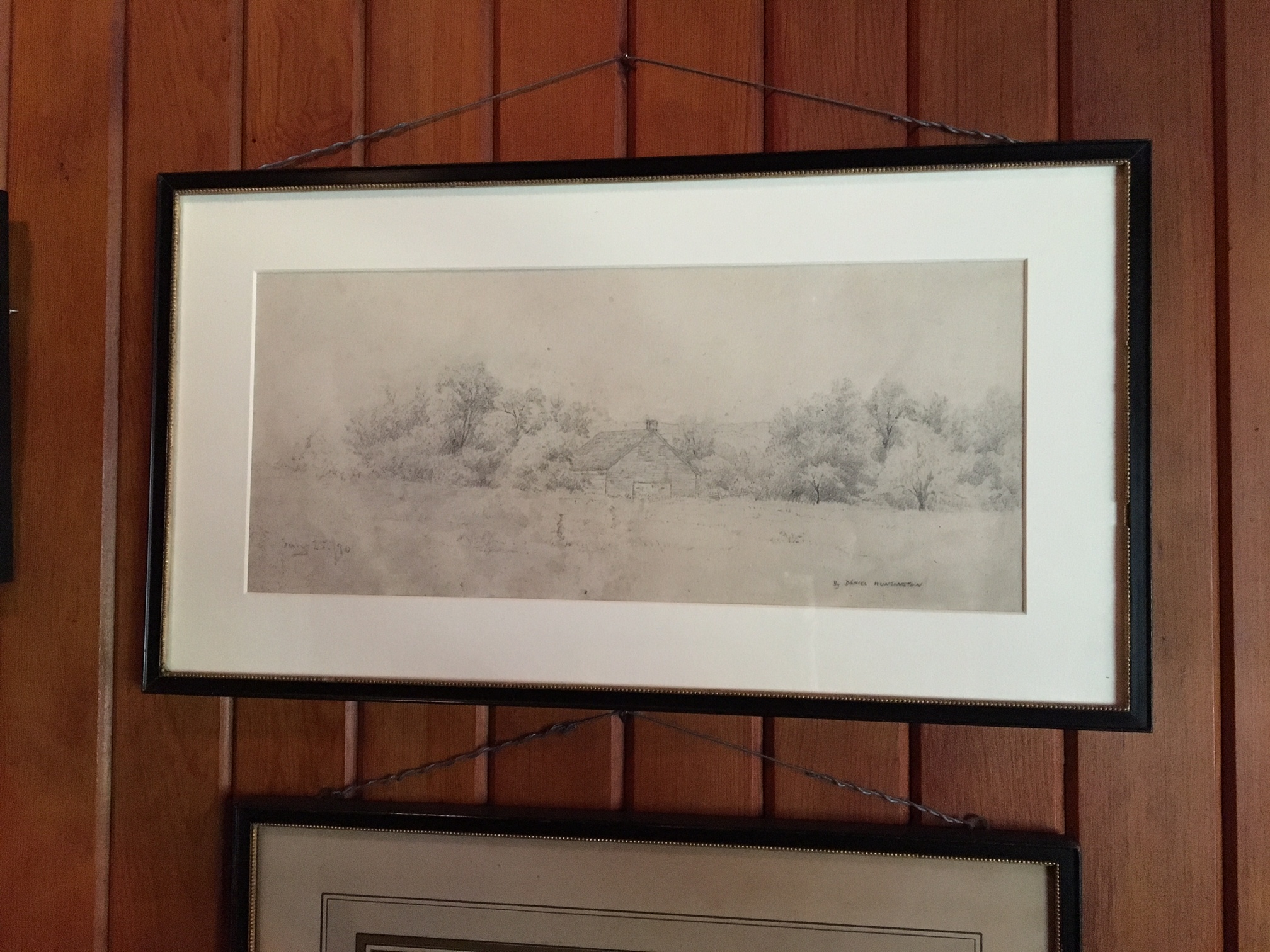
Drawing by Daniel Huntington (American, 1816–1906); Courtesy of Ringwood Manor.
This French print depicts an architectural rendering of a structure, showing both a floor plan and elevation. This piece of artwork was also a bequest of Erskine Hewitt, who enjoyed these types of works enough to have one on display at Ringwood Manor.
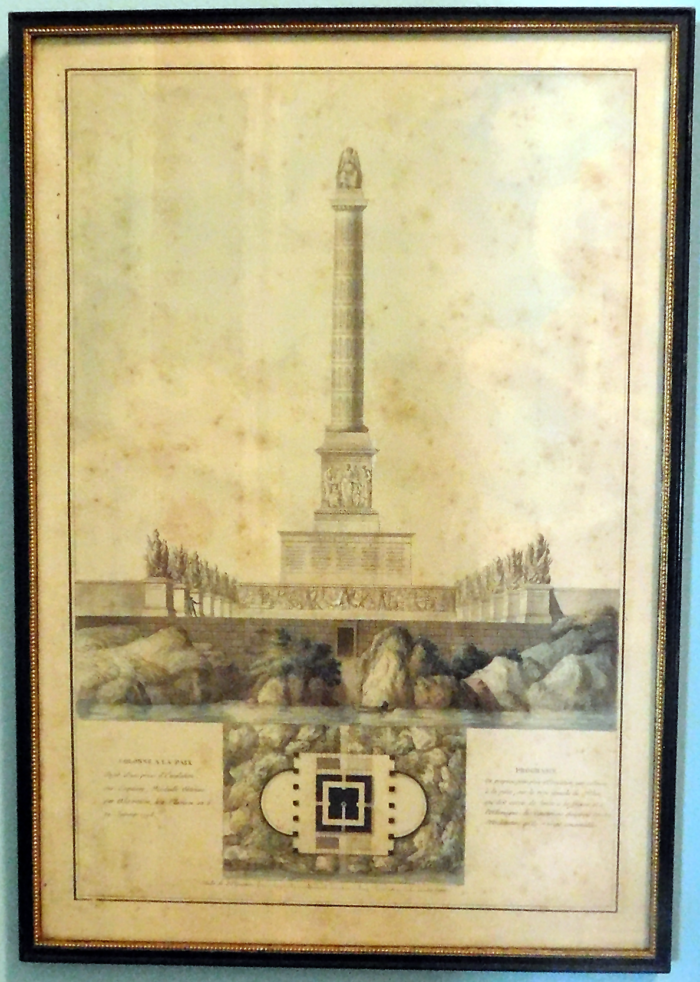
French architectural print on the second floor hallway of Ringwood Manor. Courtesy of Ringwood Manor.
Books

Sample Book, late 19th–early 20th century; paper, leather, cotton, silk, and wool; H x W x D (b): 60.1 × 40.4 × 3 cm (23 11/16 × 15 7/8 × 1 3/16 in.); Cooper Hewitt, Smithsonian Design Museum; Gift of Eleanor and Sarah Hewitt, 1931-88-151-b
Eleanor and Sarah Hewitt donated numerous sample books to their newly forming museum. The books were originally utilized as research tools for design students taking classes at Cooper Union. Perhaps this sample book in the Ringwood Manor collection was too beautiful for the sisters to donate. Or perhaps it was accidentally overlooked!
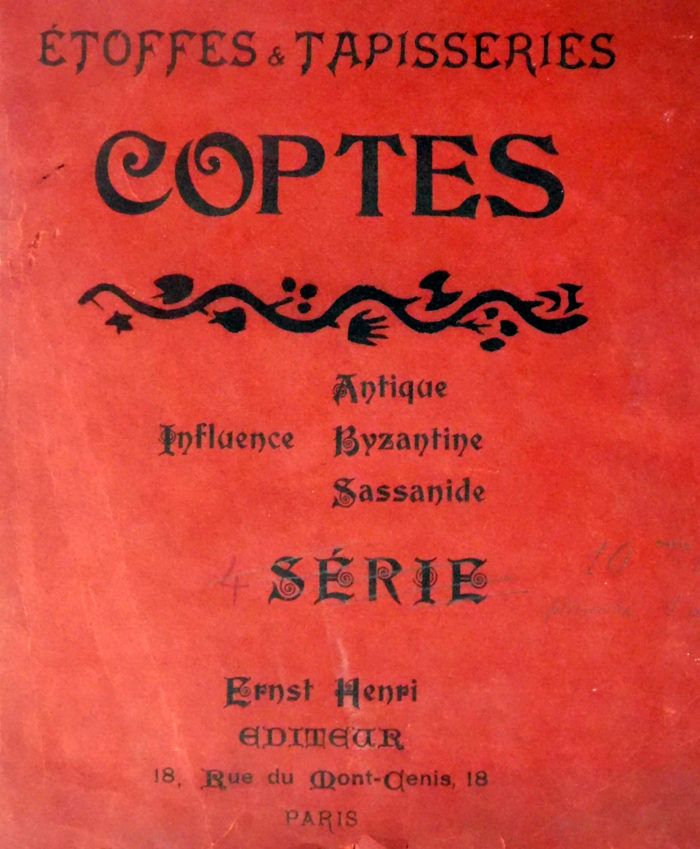
Sample book. Courtesy of Ringwood Manor.
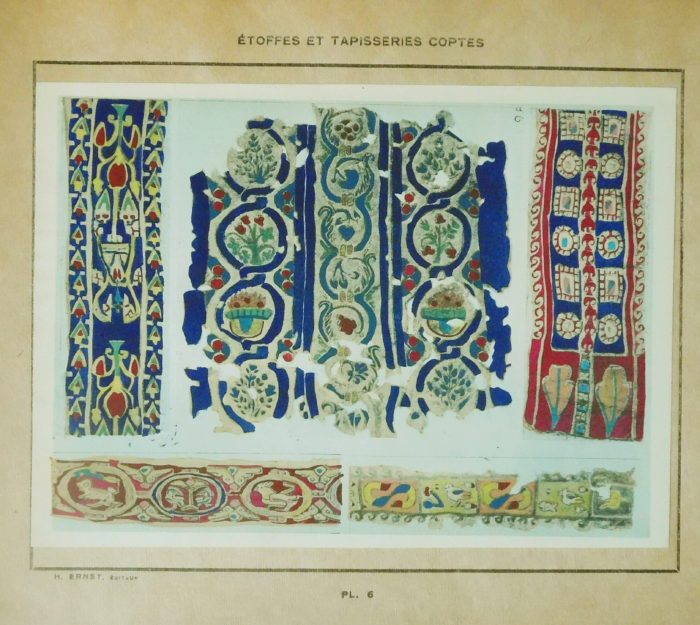
Sample book. Courtesy of Ringwood Manor.
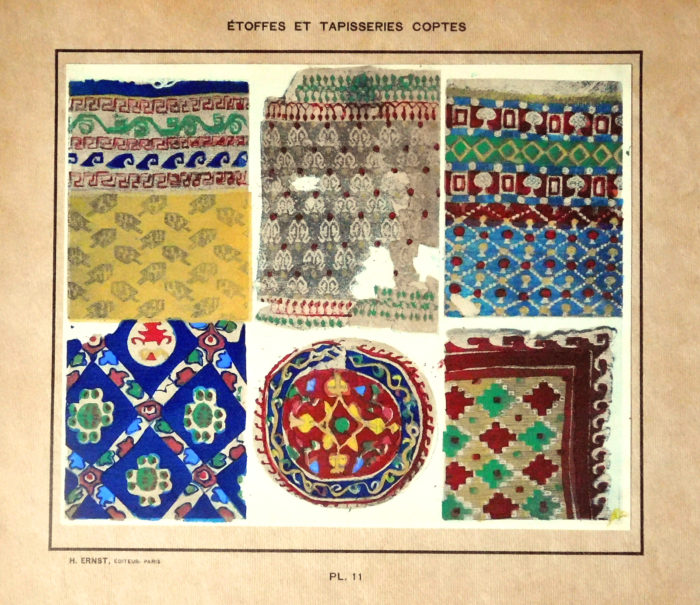
Sample Book. Courtesy of Ringwood Manor.
Ceramics & China
There is no shortage of decorative ceramics to choose from that seem to be long lost pairs! It’s possible that at one time these items may have even been displayed together in the Hewitt family’s home.
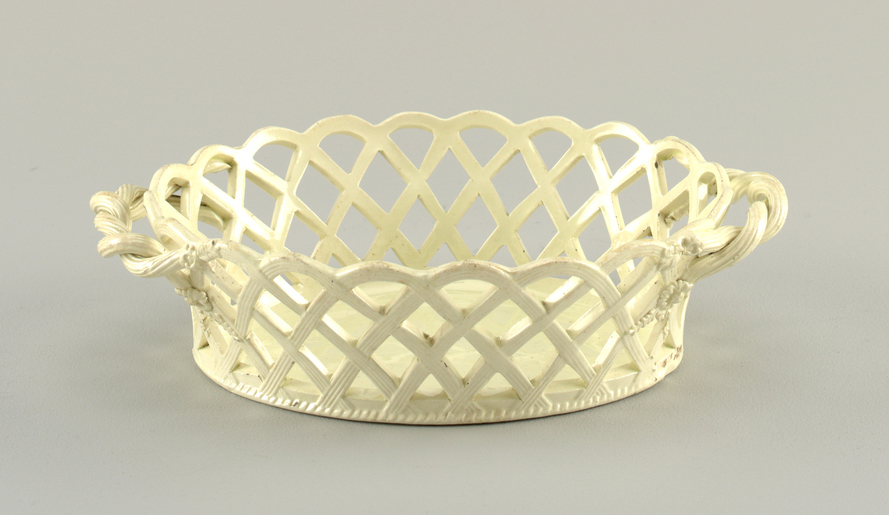
Basket (England), ca. 1770; Pierced and glazed earthenware (creamware); H x W x D: 6.6 x 24.6 x 17.4 cm (2 5/8 x 9 11/16 x 6 7/8 in.); Cooper Hewitt, Smithsonian Design Museum; Bequest of Erskine Hewitt, 1938-57-396-a
The woven glazed creamware basket, a bequest of Erskine Hewitt, could seamlessly be displayed alongside the one found on the Dining Room table at Ringwood Manor.
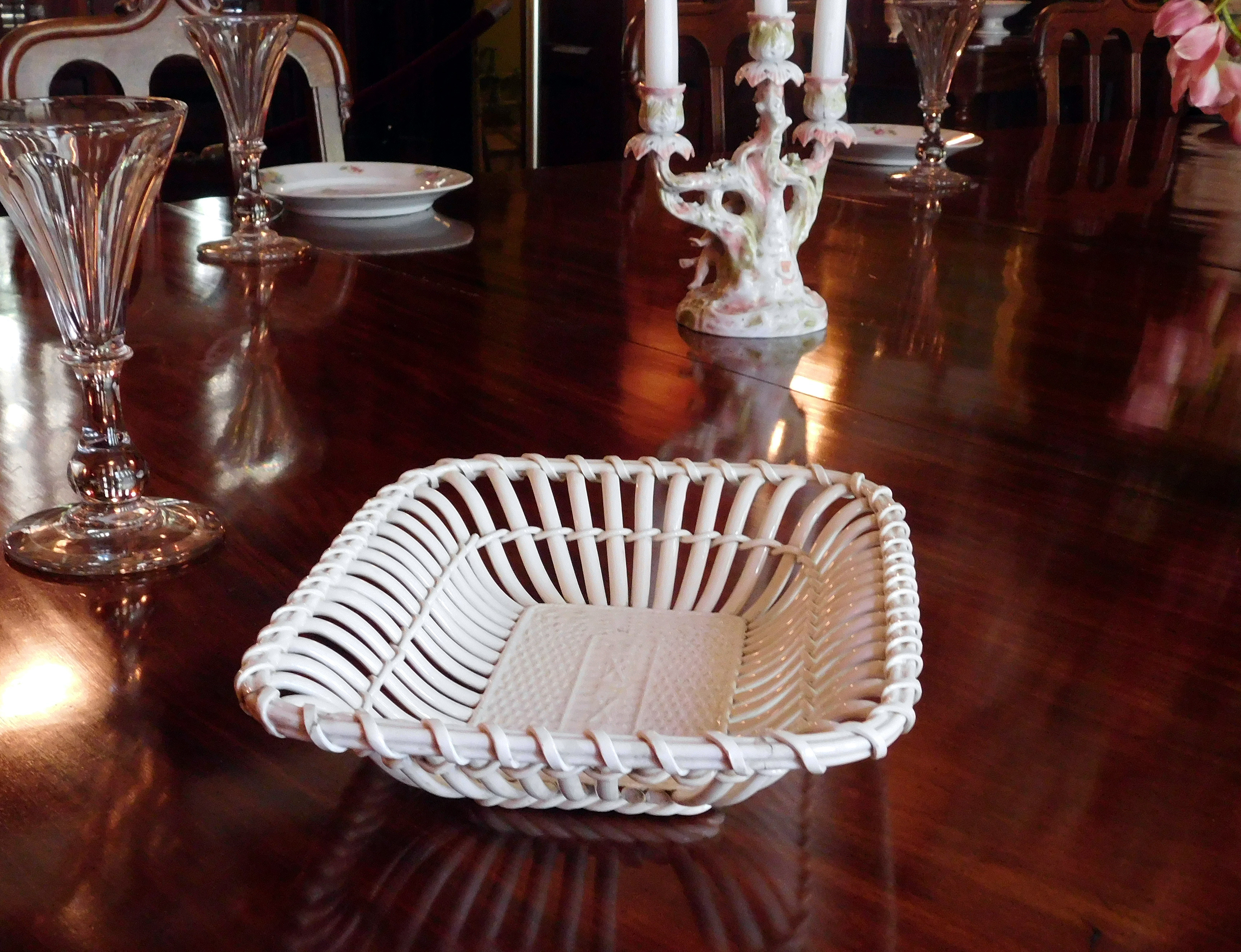
Creamware basket. Courtesy of Ringwood Manor.
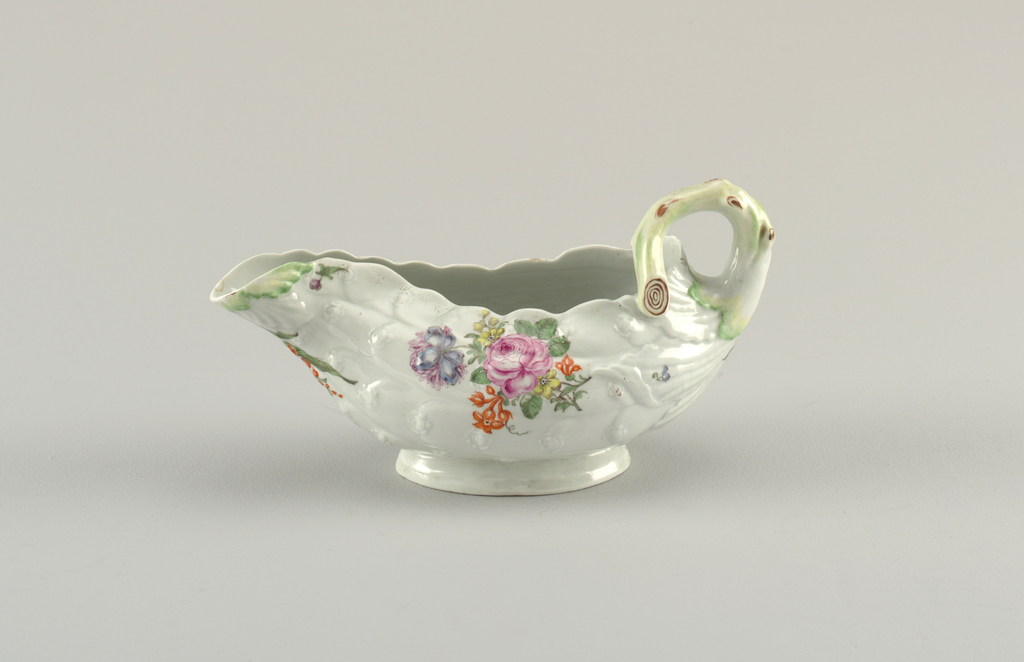
Sauce Boat (England), 1750–60; Manufactured by Worcester Porcelain Factory (England, GB, United Kingdom); Glazed soft-paste porcelain with overglaze enamels; H x W x D: 12.6 x 23 x 10 cm (4 15/16 x 9 1/16 x 3 15/16 in.); Cooper Hewitt, Smithsonian Design Museum; Bequest of Erskine Hewitt; 1938-57-430
This delightful floral sauceboat was another contribution from Erskine Hewitt. But perhaps he also meant to donate this soup tureen to the museum as well? It rests with a collection of ceramic items in the china hutches at Ringwood Manor.
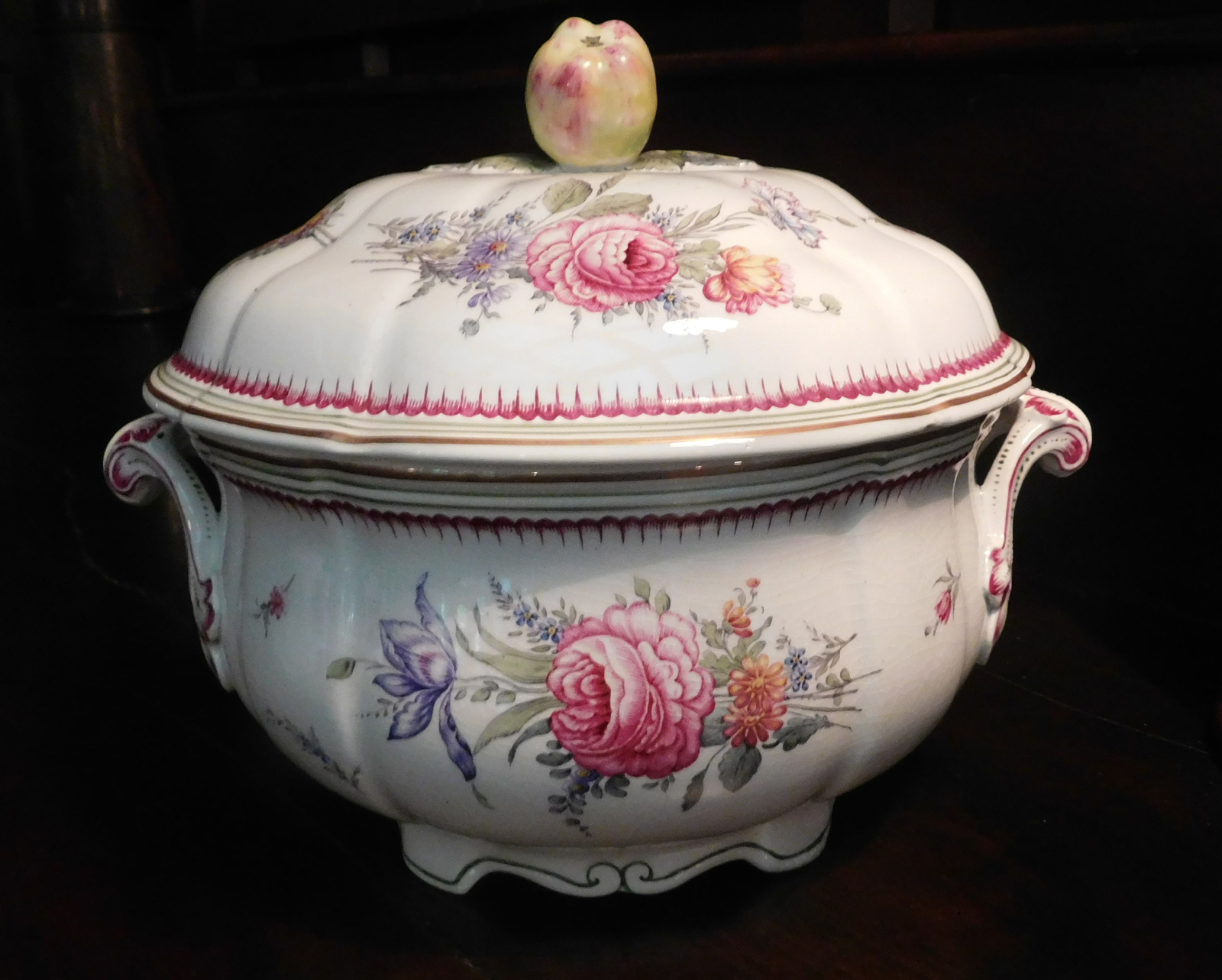
Soup tureen. Courtesy of Ringwood Manor.
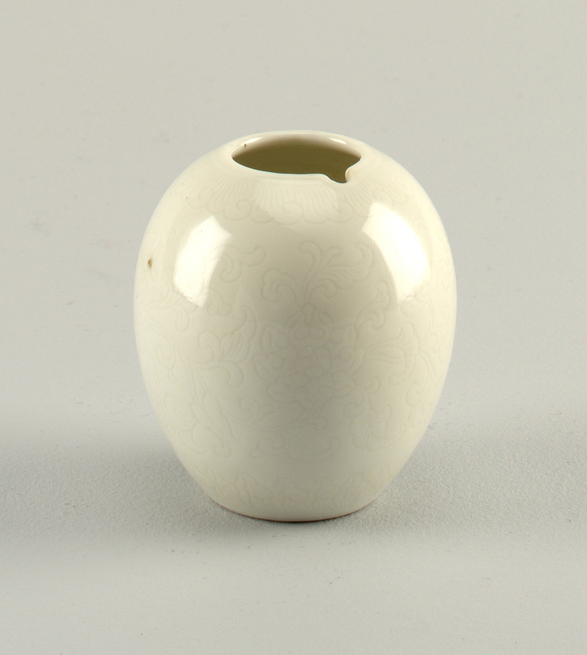
Brushwasher (China); Porcelain; H x diam.: 7 x 5.6 cm (2 3/4 x 2 3/16 in.); Cooper Hewitt, Smithsonian Design Museum; Bequest of Erskine Hewitt, 1938-57-350-a,b
This Chinese brushwasher that Erskine Hewitt bequeathed to the museum is stunning in its simplicity. A piece with a similar silhouette and proportions resides in Ringwood Manor’s parlor.
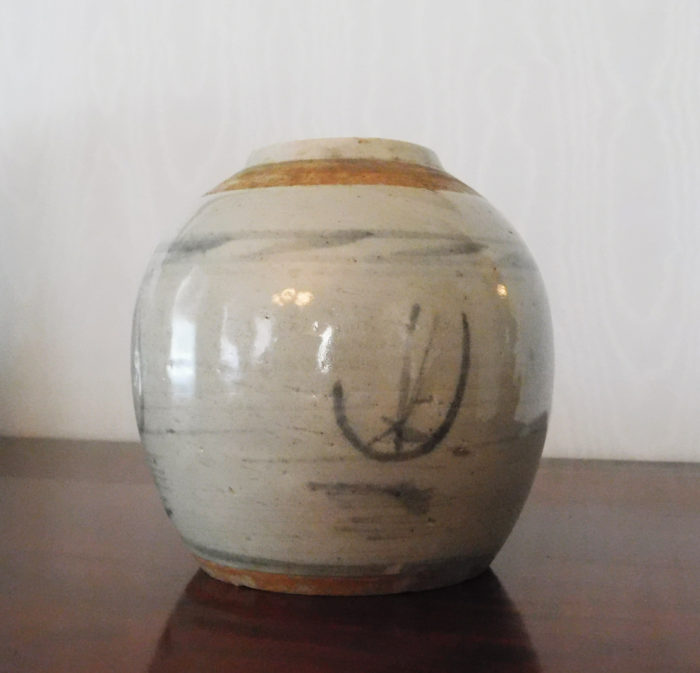
Brushwasher. Courtesy of Ringwood Manor.
Furniture
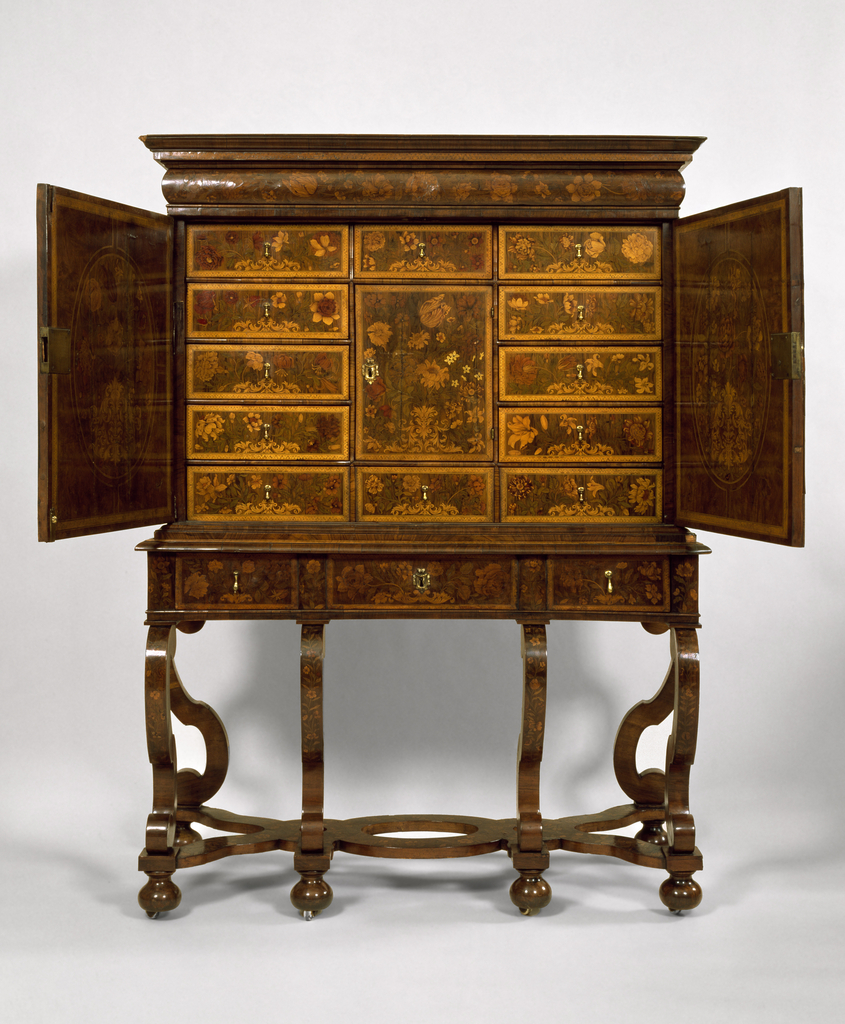
Cabinet On Stand (probably England), 1675–1700; Marquetry inlaid, veneered and joined oak, deal, walnut, and other wood, bone, brass; H x W x D: 171.5 x 133 x 55.8cm (67 1/2 x 52 3/8 x 21 15/16in.); Cooper Hewitt, Smithsonian Design Museum; Bequest of Mrs. John Innes Kane, 1926-22-43
While not a piece that the Hewitt family donated to the museum, the gorgeous marquetry cabinet is one that would display well at Ringwood Manor! Numerous marquetry furniture pieces, including china hutches, desks, tables, and chairs are scattered throughout the interior spaces of the Hewitt country home.
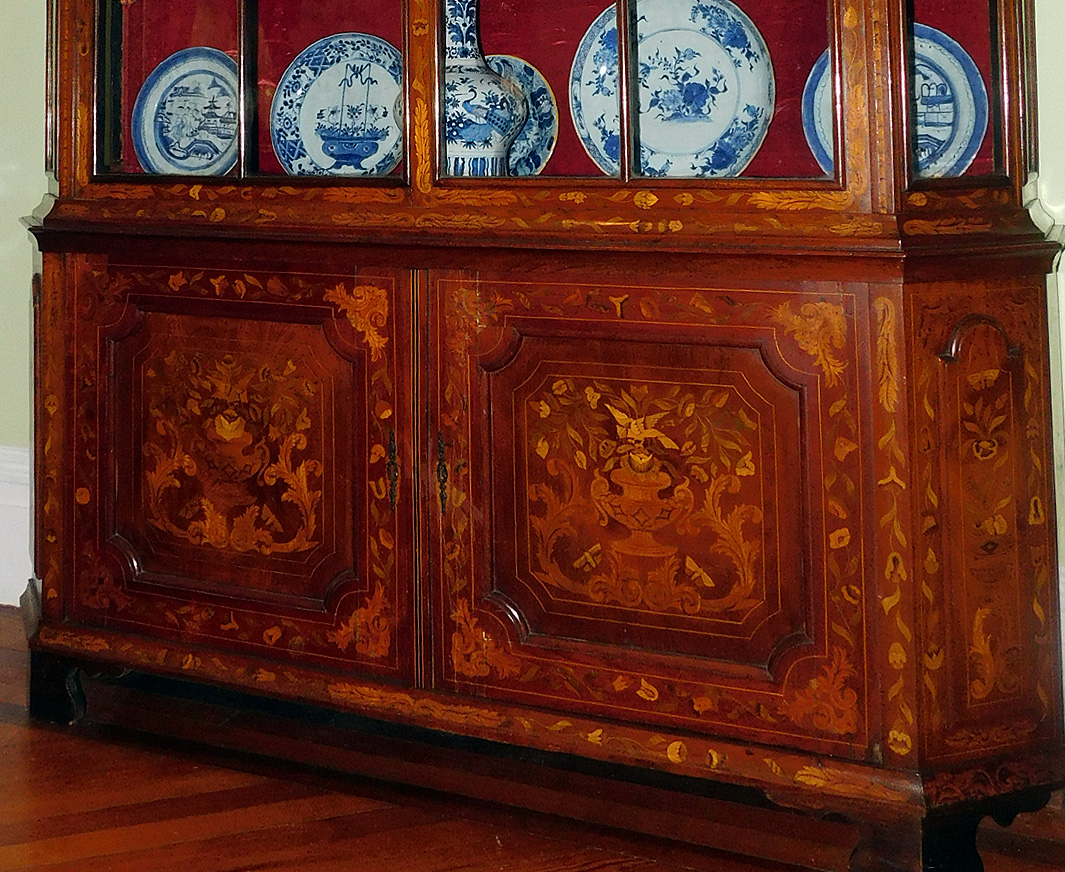
China hutch. Courtesy of Ringwood Manor.
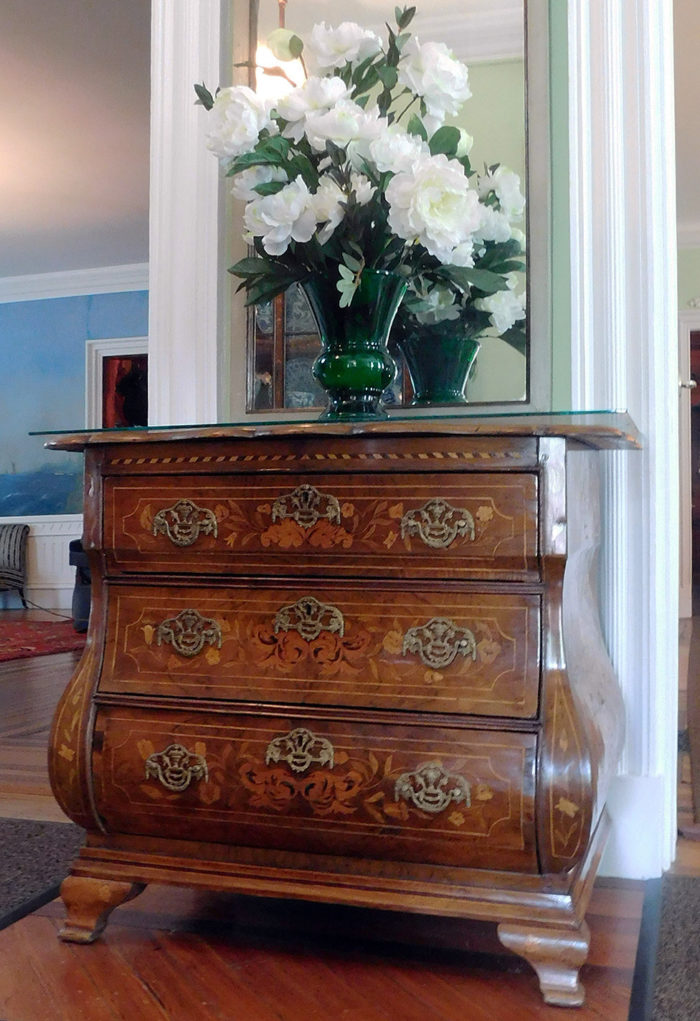
Courtesy of Ringwood Manor.
Textiles
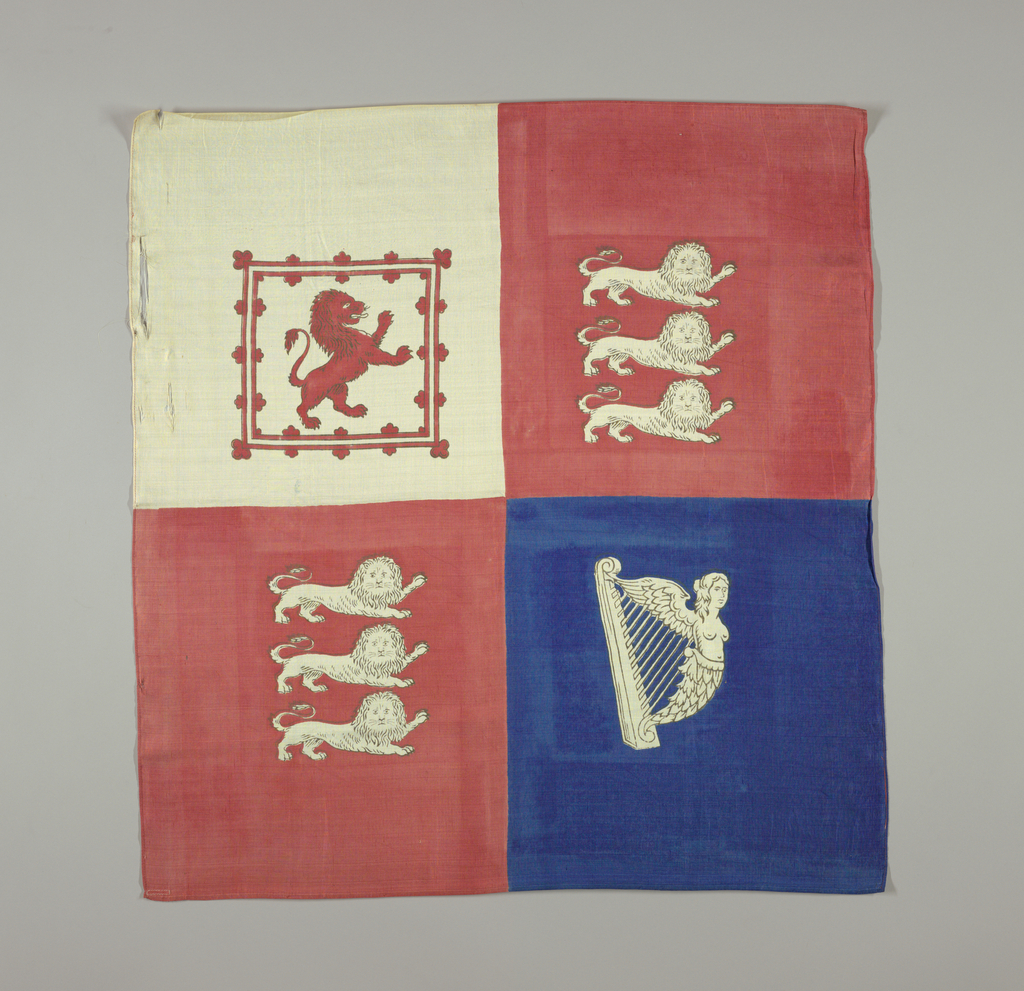
Square, 19th century; Silk; H x W: 83 × 78 cm (32 11/16 × 30 11/16 in.); Cooper Hewitt, Smithsonian Design Museum; Bequest of Erskine Hewitt, 1938-57-1163
This silk square may have once hung as a flag waving outside a home, or perhaps gracing an entrance hall or parlor as wall decor. Ringwood Manor has a piece of similar size and material resting in its storage area. This particular textile showcases light blue and cream colored stars flanking a central design of a cherub riding a dolphin.
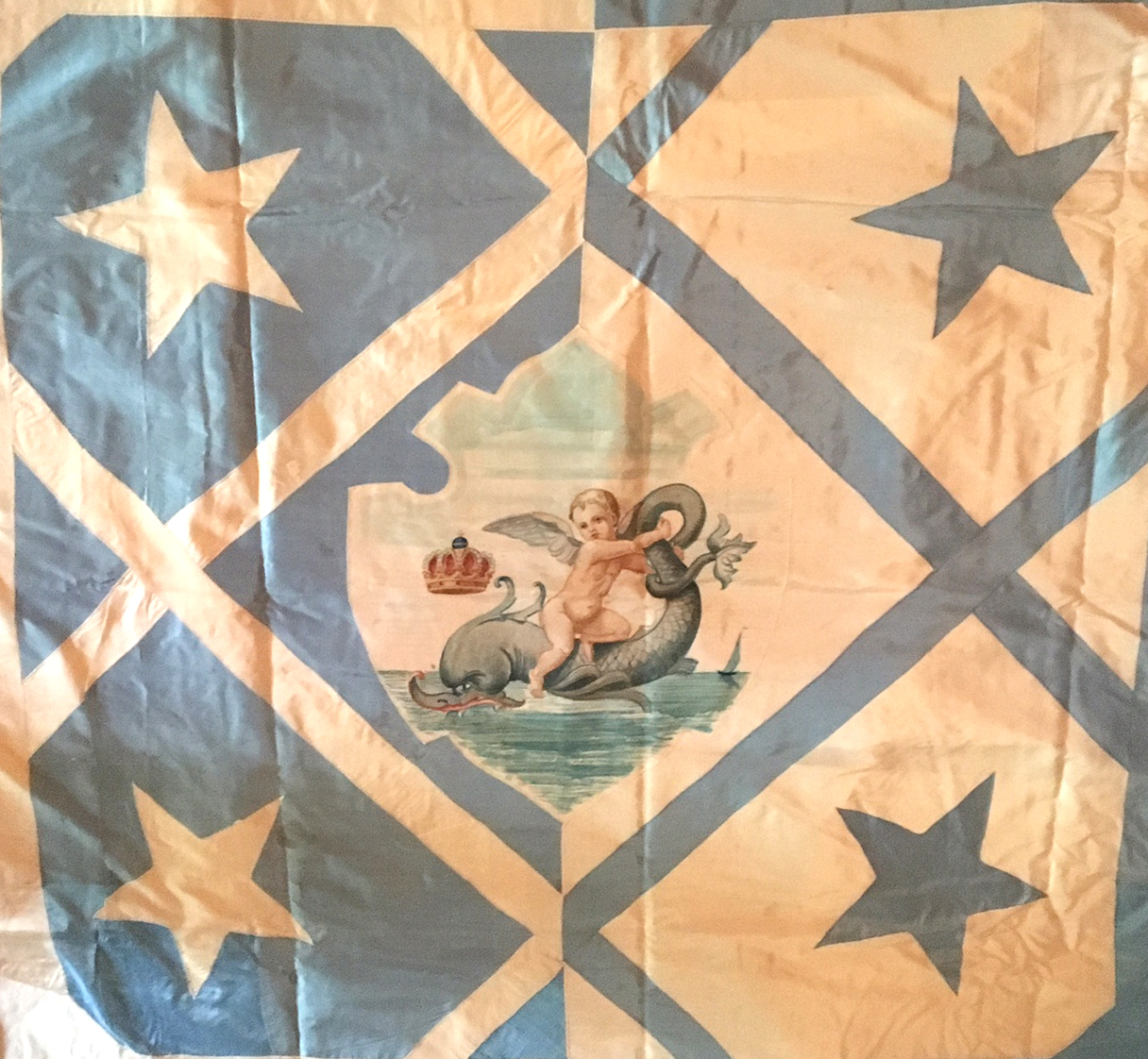
Silk square. Courtesy of Ringwood Manor.
Tiles
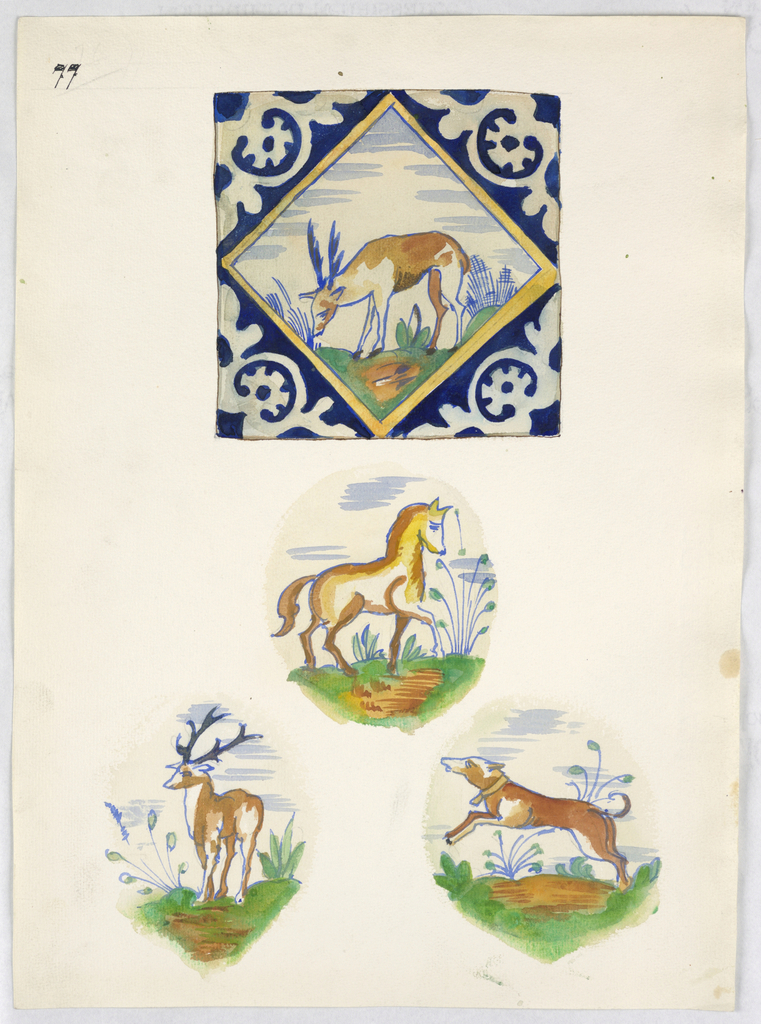
Drawing (Netherlands), ca. 1920; Brush and watercolor, graphite on paper; Cooper Hewitt, Smithsonian Design Museum; Gift of Sarah Cooper Hewitt, 1927-16-2
The current Hewitt Sisters Collect exhibition, located on the second floor of Cooper Hewitt, Smithsonian Design Museum, features tiles that were donated by Eleanor and Sarah Hewitt. The sisters also collected drawings and watercolors featuring designs for tiles, many of which were donated to the museum. Those Dutch tiles must have been a favorite of Mrs. Sarah Hewitt, as they were utilized in the design of the fireplace surrounds in the library of Ringwood Manor!
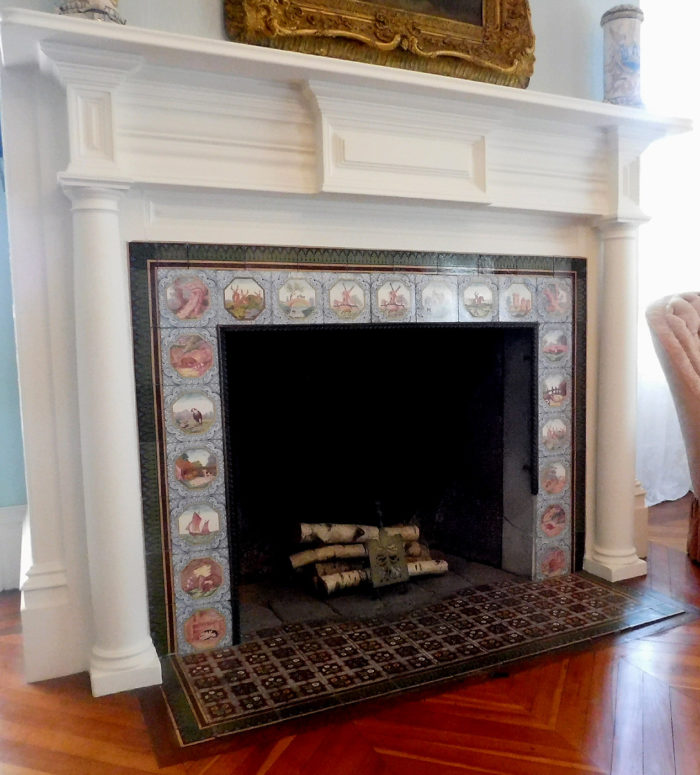
Courtesy of Ringwood Manor.
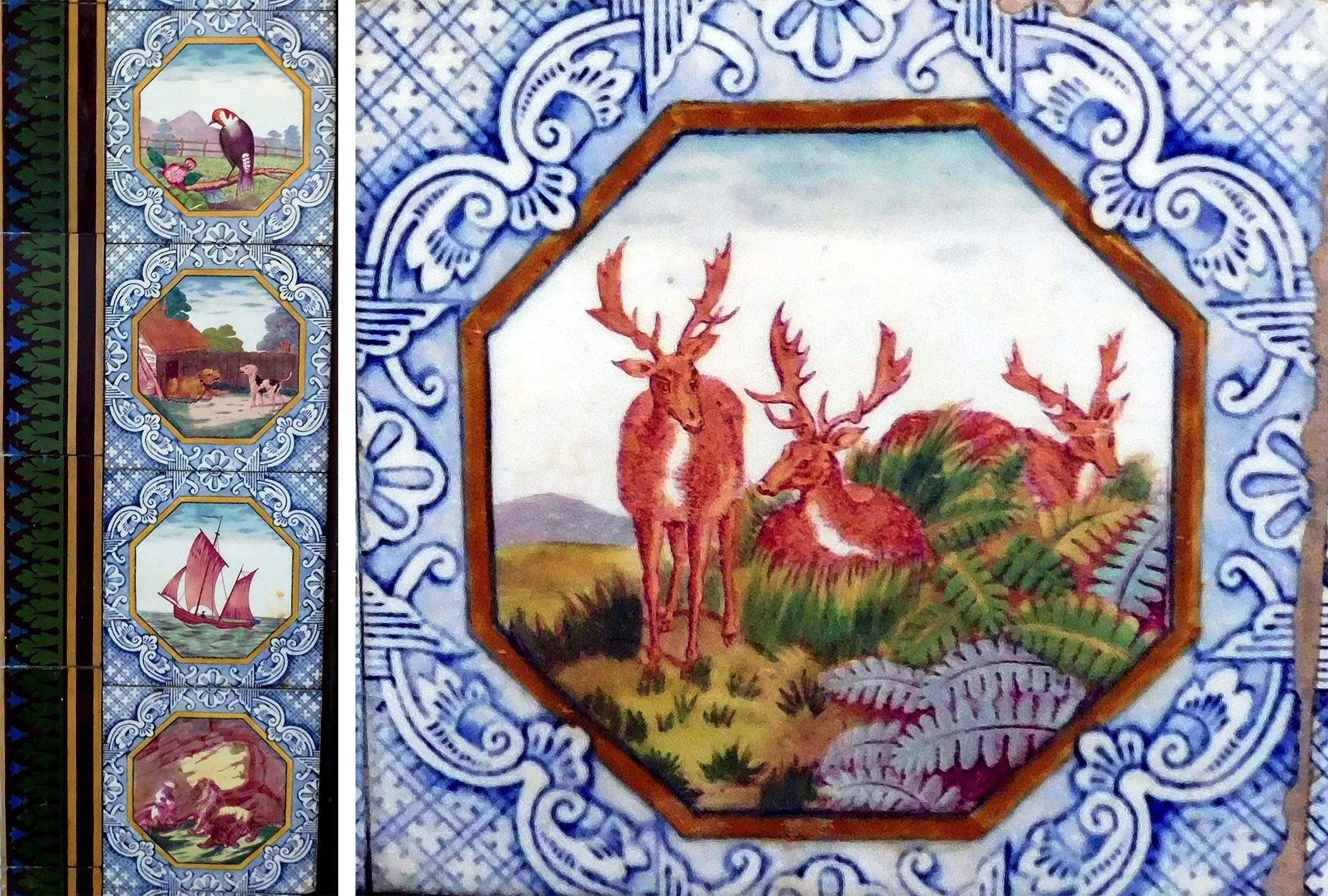
Courtesy of Ringwood Manor.
There are many more objects found in the Cooper Hewitt, Smithsonian Design Museum’s collection that match ones found at Ringwood Manor. If you have not done so before, I encourage you to peruse the online database. And then visit Ringwood Manor—things may look familiar to you!
Sources
Cooper Hewitt, Smithsonian Design Museum online collection.

